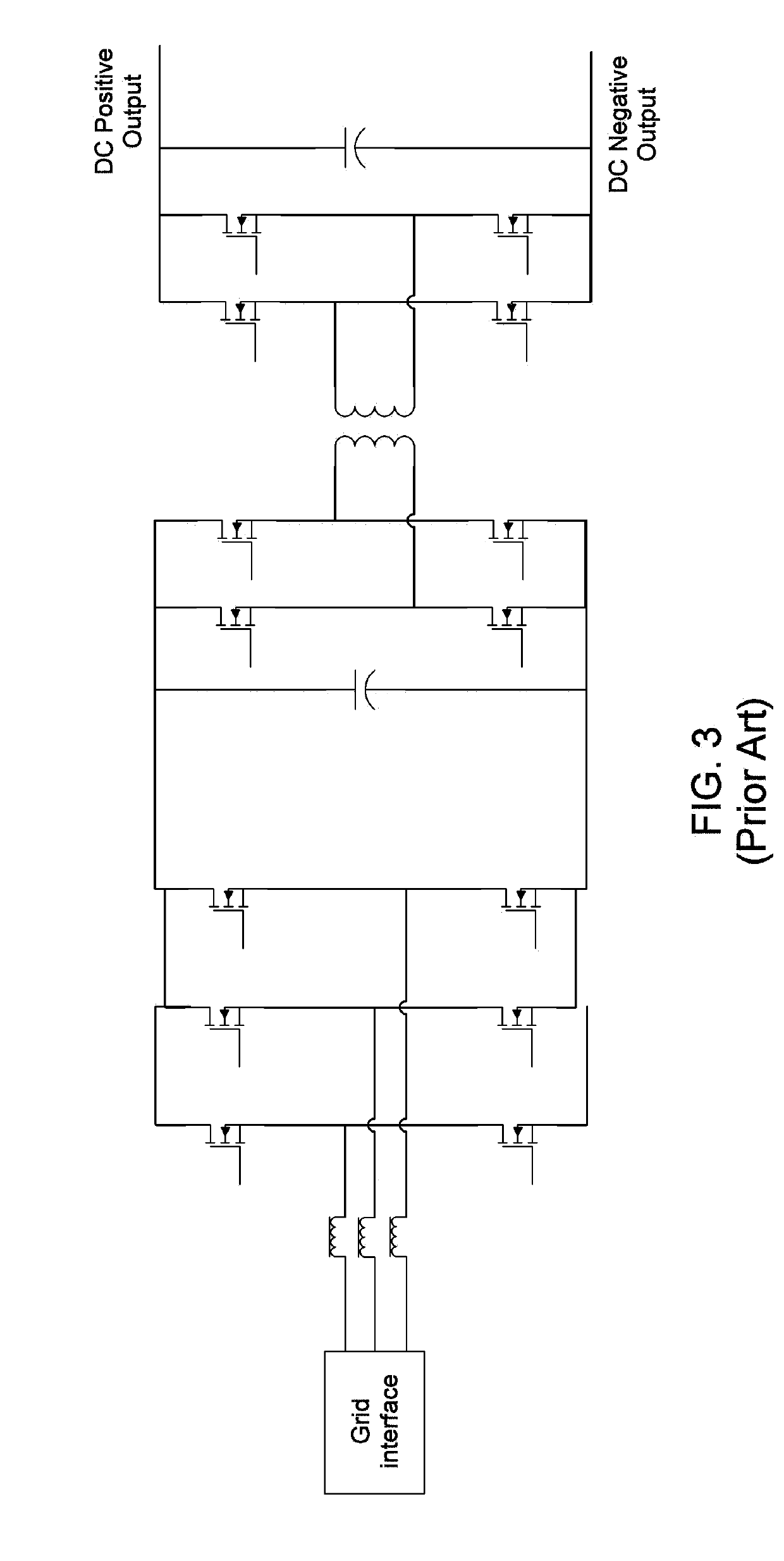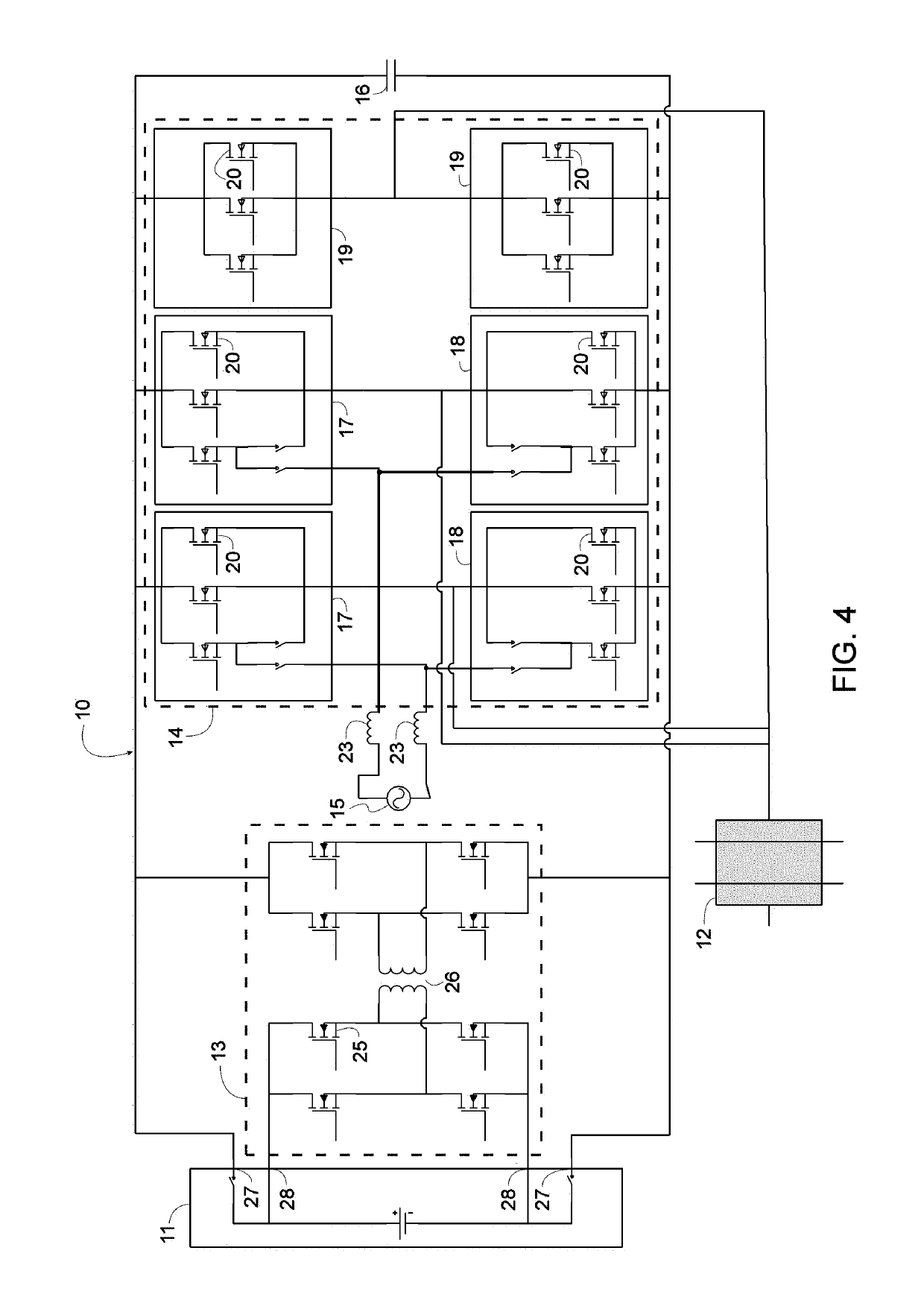Inverter-charger combination
a technology of inverter and charger, which is applied in the direction of charging stations, battery/fuel cell control arrangements, transportation and packaging, etc., can solve the problems of inability to meet the current industry requirements for charging efficiency and the majority of the onboard battery power of electric vehicles, so as to reduce the number of gate drivers, optimize motor performance, and reduce the inductance and impedance of gate drivers
- Summary
- Abstract
- Description
- Claims
- Application Information
AI Technical Summary
Benefits of technology
Problems solved by technology
Method used
Image
Examples
first embodiment
[0035]FIG. 4 illustrates an inverter-charger combination 10 according to the invention, which is operatively coupled to a rechargeable energy storage system (RESS) 11 at one end and to a load 12 at another end. In one example of use, RESS 1 is a battery and load 12 is a traction motor of an electric vehicle. This embodiment is adapted for single phase charging, as will be discussed in greater detail later.
[0036]The basic components of inverter-charger combination 10 include a dual active bridge 13, a plurality of switching elements 14.
[0037]Dual active bridge 13 provides galvanic isolation to RESS 11 and comprises a plurality of RESS-side switches 25 and a dual active bridge transformer 26. As shown in FIG. 4, dual active bridge 13 is interposed between the plurality of switching elements 14 and is connected in parallel with plurality of switching elements 14 and with capacitor 16, which operates as a direct current (DC) link capacitor. RESS 11 is connected to inverter-charger combi...
second embodiment
[0050]An inverter-charger combination according to this second embodiment may be used for three-phase charging of a RESS above 19.2 kW, and, more typically, may be used for three-phase charging of a RESS above 10 kW.
[0051]As it can be seen, in an inverter-charger combination according to the invention, the use of the traction inverter and the charger are mutually exclusive so the same processor can be used to control both functions, reducing costs. Moreover, the same DC link structures can be used for both functions, also reducing costs.
[0052]It can also be seen that, in an electric vehicle, by deploying a highly efficient DC-DC converter with sufficient current to deliver DC current to the traction inverter, a constant or variable DC link voltage strategy can be developed that optimizes motor performance irrespective of the state of charge of the battery of the vehicle.
[0053]While the preceding two embodiments include six switching elements 17, 18, or 19, it should be understood th...
PUM
 Login to View More
Login to View More Abstract
Description
Claims
Application Information
 Login to View More
Login to View More - R&D
- Intellectual Property
- Life Sciences
- Materials
- Tech Scout
- Unparalleled Data Quality
- Higher Quality Content
- 60% Fewer Hallucinations
Browse by: Latest US Patents, China's latest patents, Technical Efficacy Thesaurus, Application Domain, Technology Topic, Popular Technical Reports.
© 2025 PatSnap. All rights reserved.Legal|Privacy policy|Modern Slavery Act Transparency Statement|Sitemap|About US| Contact US: help@patsnap.com



